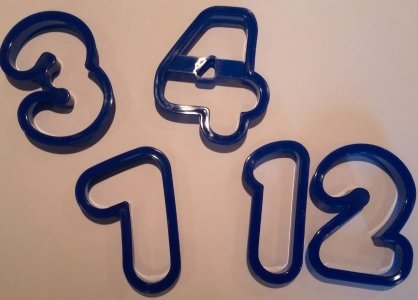Mathematics is full of challenges that remain unanswered. The field of Number Theory is home to some of the most intense and fascinating work. Two Oxford mathematicians, Ben Green and Tom Sanders, have recently made an important breakthrough in an especially tantalising problem relating to arithmetic structure within the whole numbers.
Imagine colouring every positive whole number with one of three colours, say red, green and blue. You might end up with this colouring: R1, G2, B3, B4, G5, R6, B7, R8, R9, G10, B11, B12, R13, G14, B15, B16, R17 ...
Or perhaps you chose one of the other infinitely many possibilities. Can you always pick two of these numbers, say x and y, so that x, y, x+y and xy all have the same colour?
For example, in our choice of colouring above we see that 3, 4, 3+4=7 and 3x4=12 are all blue, so it's possible for this colouring. But will we always be able to do this, regardless of the colouring? And what if we use four colours, or even more, will we always be able to do it then too?
This is a well-known question in Ramsey theory, a branch of combinatorics that seeks to establish the existence of structure (such as the pattern x, y, x+y and xy all having the same colour) in randomness (such as all the many colourings). Results in Ramsey theory link with other areas of mathematics, and also have applications in other fields, notably in theoretical computer science.
A hundred years ago, the mathematician Issai Schur showed that if we colour every positive whole number with one of three or more colours then there are always two numbers, say x and y, so that x, y and x+y all have the same colour. Extending this to handle multiplication as well as addition has turned out to be a significant challenge.
Ben and Tom have solved a sort of 'model' problem, where instead of colouring the integers they work with a finite analogue. This approach of considering a model problem has proved extremely fruitful for a number of other related questions, but it was far from clear how to proceed in this case. Ben and Tom introduced a number of new techniques in order to solve the problem in this finite model situation.
How does the finite analogue work? Instead of colouring the positive whole numbers, Green and Sanders use a different system that shares similar arithmetic properties. Imagine a clock that shows 7 hours (rather than the familiar 12). Every 7 hours, the hour hand gets back round to the top. We can do arithmetic in this scenario too, for example 13 + 17 = 6 + 3 = 2 in this world, and 13 x 17 = 6 x 3 = 4. Ben and Tom showed that if the 7 values in this system are coloured using three or more colours then there must be many x and y for which x, y, x+y and xy all have the same colour, and similarly for any such system where the number of values is prime. Their work has been published in the new journal Discrete Analysis.
Indeed there has already been follow-up work, with Ben and his Oxford Graduate Student Sofia Lindqvist using similar ideas to resolve a question about monochromatic solutions to the equation $x+y=z^2$.
The original problem may remain unanswered, but mathematicians now have a way in and are working to establish whether Ben and Tom’s work provides the answer, both to this and maybe further problems in number theory. As so often, successes are incremental and hard-fought as mathematicians continue to map the structures that populate their and our world.


